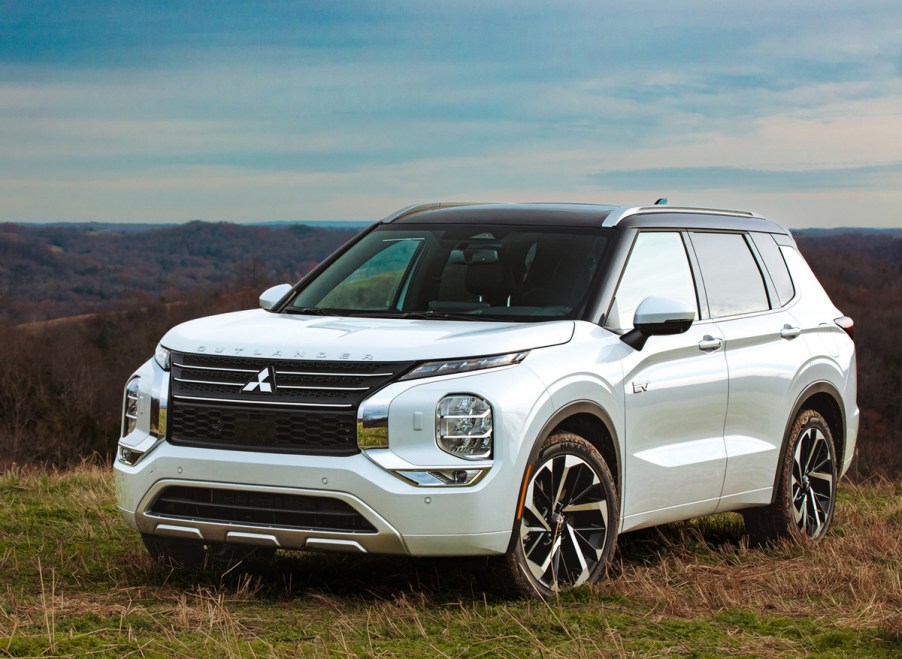
The 2024 Mitsubishi Outlander PHEV Apparently Appeals to Pro Drivers
I noticed something strange while testing the 2024 Mitsubishi Outlander to review. Namely, people that drive commercial vehicles for a living seem to be fans of the current generation Outlander. For several days I piloted the PHEV version of the Outlander, introduced in 2023, to a school bus depot. The parking lot included a few dozen cars each day, and among them were several new Outlander models. I also met a woman married to a professional long-haul trucker. His daily driver? A current-gen Outlander. The number of Mitsubishi SUVs was noticeable considering the Outlander, though it sells well enough, isn’t exactly the Toyota RAV4 when it comes to models moved. So, what makes bus drivers and “big rig” drivers so keen on the Outlander?
It could be a coincidence, of course, but my theory is that the 2024 Outlander appeals to pro drivers because, unlike their rigs, it’s downright easy to drive and live with.
The PHEV Outlander enhances the experience.
The plug-in version couples a 2.4-liter four-cylinder with two electric motors for 248 horsepower. That’s 67 more horsepower than the non-PHEV version. You’ll feel the difference. The PHEV version is peppy around town and has respectable passing power on the highway.
To boot, the 20-kWh battery pack boasts a claimed all-electric range of 38 miles. However, prospective buyers should note DC fast charging is optional, and it uses an CHAdeMO port that is being gradually phased out of use on public chargers. Buyers will want to keep the battery charged, too. The Outlander delivers just 26 combined mpg on gasoline power alone.
Ride quality is comfortable, as are the seats. The cabin mutes outside noise well. Its handling is respectable. If you’re coming from a school bus or 18-wheeler, driving the Outlander must feel like you’re floating on air. The steering is well-weighted, and the brakes are easy to modulate. The regenerative braking is impressively nonobtrusive.
The Outlander PHEV stands out from the compact SUV crowd by offering a third row of seats, (in addition to being a plug-in). However, don’t expect those seats to be usable in any situation other than a, quite literal, pinch. They’re extremely small. It’s better just to consider the Outlander a five-seater with a spacious 31 cubic feet of cargo space behind the mid row.

My tester to review was the 2024 Outlander PHEV SEL, effectively the top-tier model. All Outlander models come with a generous list of standard equipment, but the SEL ups the ante with leather seating, tri-zone automatic climate controls, heated rear outboard seats, rear sunshades, and other amenities. It also sports standard DC fast charging.
The SE Tech Package adds other creature comforts like a panoramic sunroof and Bose audio with a suite of additional safety features. They include a surround-view camera system, lane-keep assist, blind-spot intervention, highway driving assist and adaptive cruise control.
Again, if you’ve just spent hours driving a 10-year-old school bus full of 10-year-old kids, the Outlander is downright luxurious.
There are plenty of traditional knobs and buttons to control the optional 12.3-inch touchscreen. The Outlander shares its platform with the Nissan Rogue, and the tech system underscores this. As such, it’s not a flashy system, but it’s intuitive. However, my system crashed one day while driving on the highway. It re-booted without issue, but other reviewers have noted some other apparent tech gremlins.
Overall, the 2024 Outlander PHEV is roomy (if you don’t use the third row), comfortable, easy to use, easy to drive and generously equipped. It’s not the cheapest or best overall option in the compact SUV segment, but those seeking a fuss-free compact model should certainly consider the Outlander. The PHEV version, though it comes with potential charging headaches, is more appealing with its added power and notable all-electric range.
I still can’t say exactly why commercial drivers seem drawn to it, but they may be on to something.



